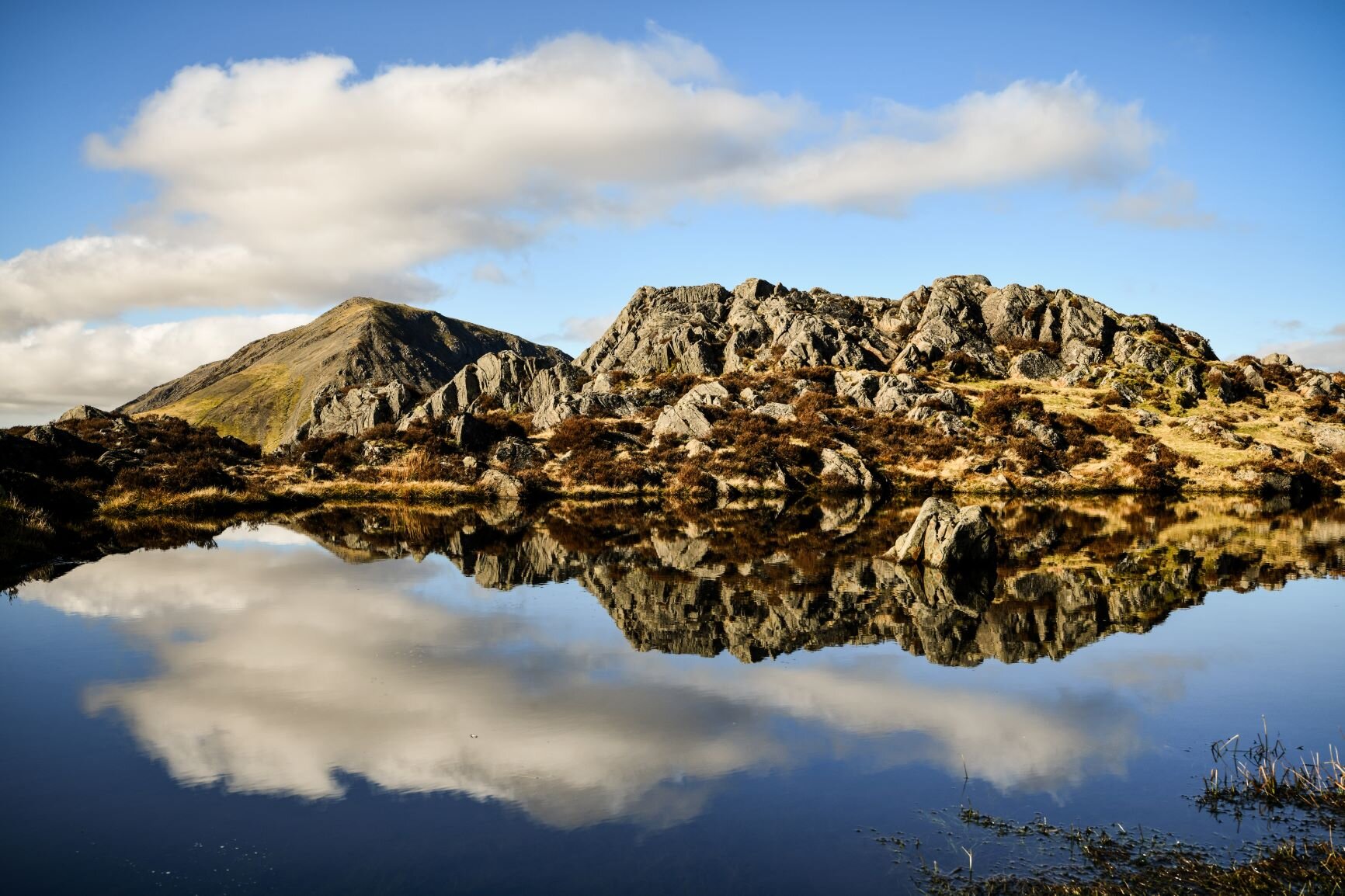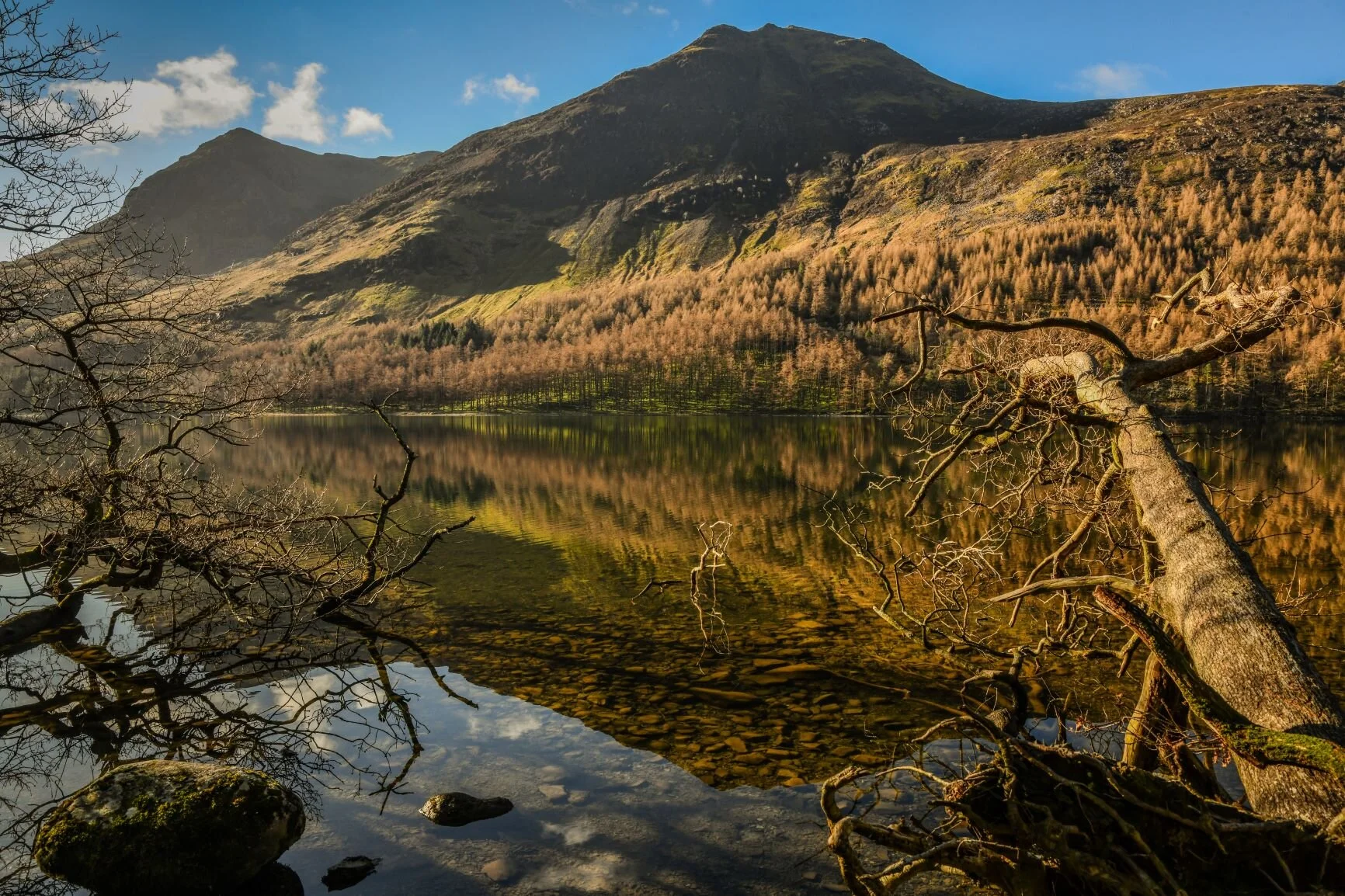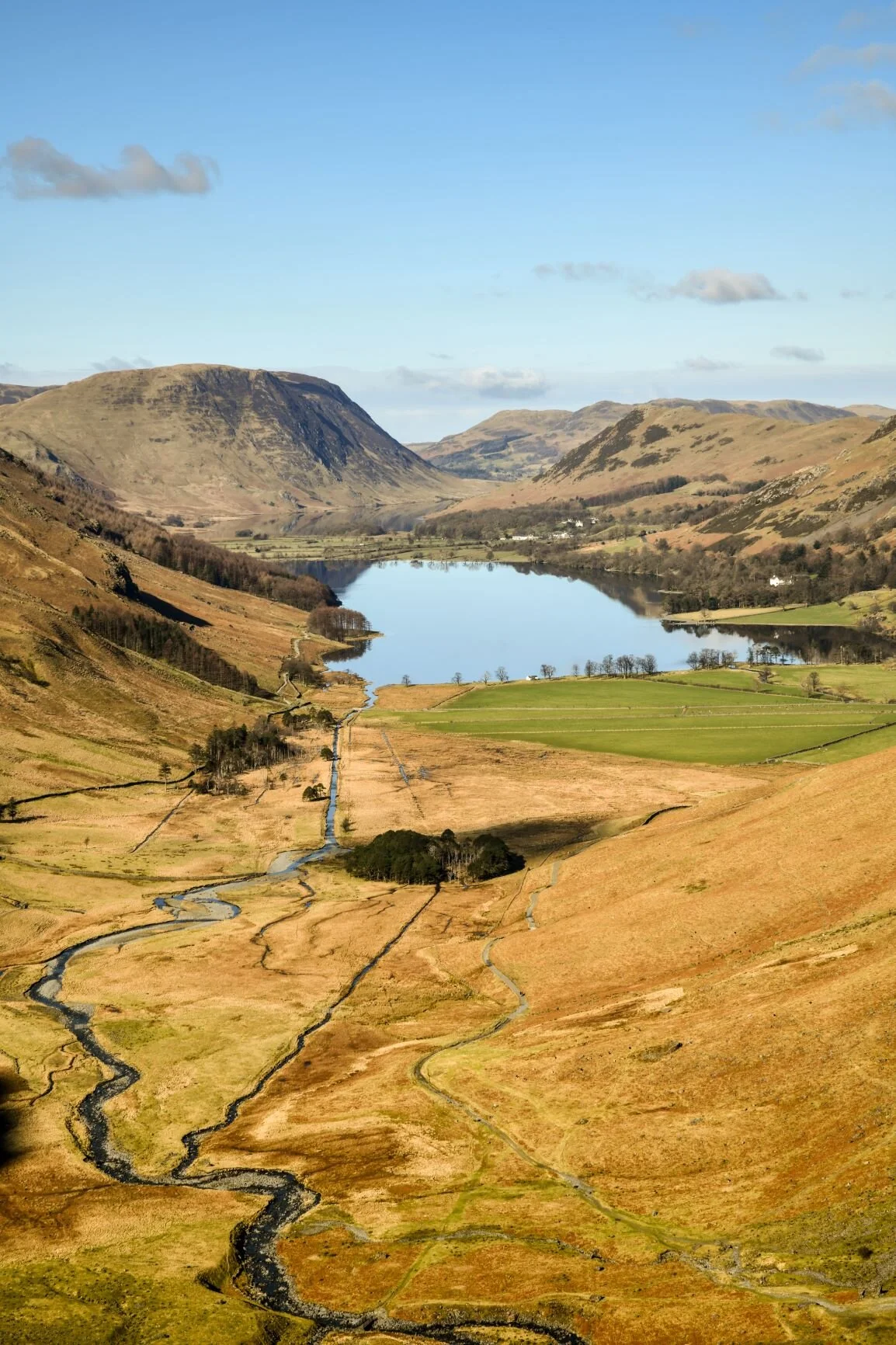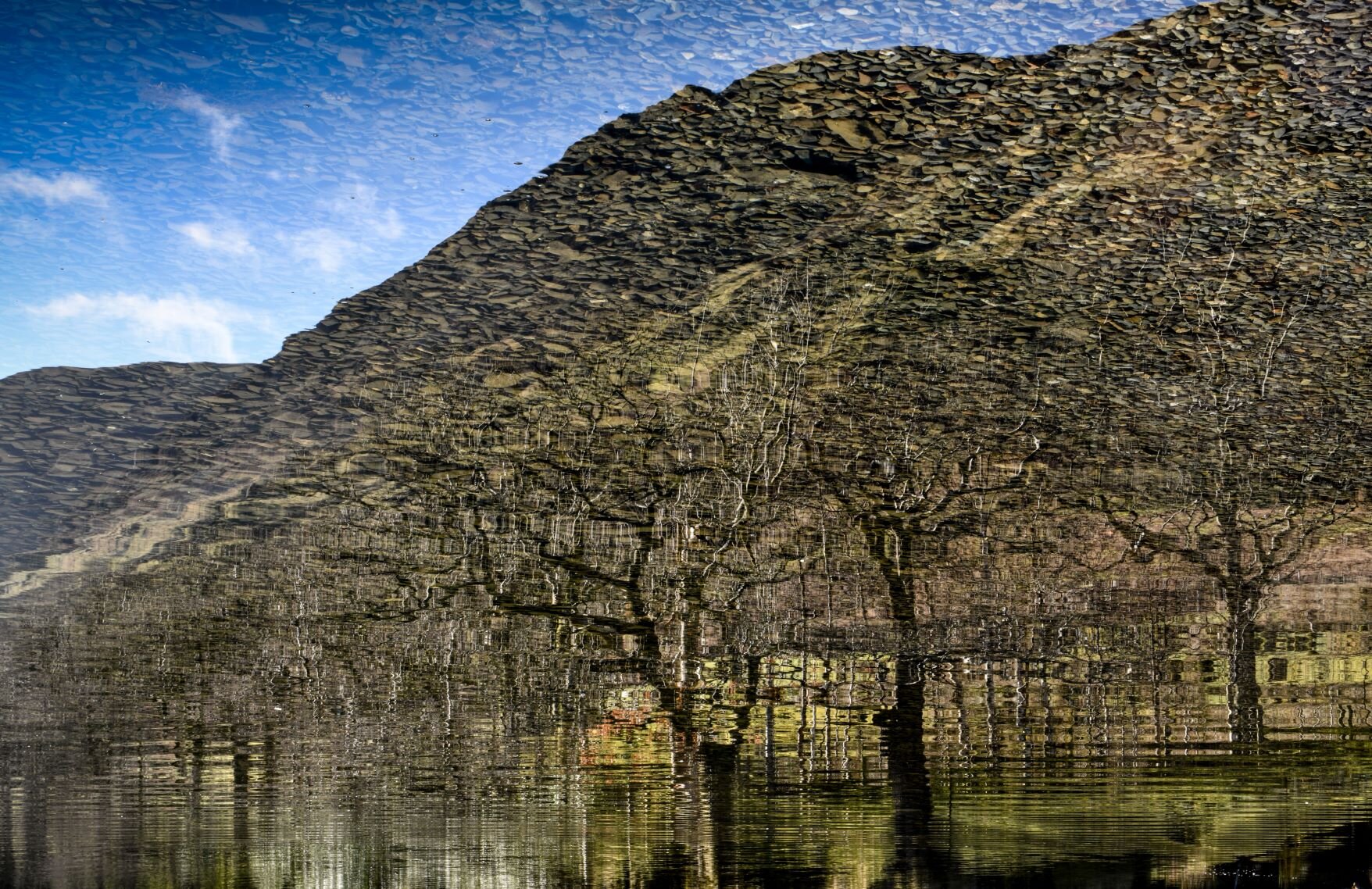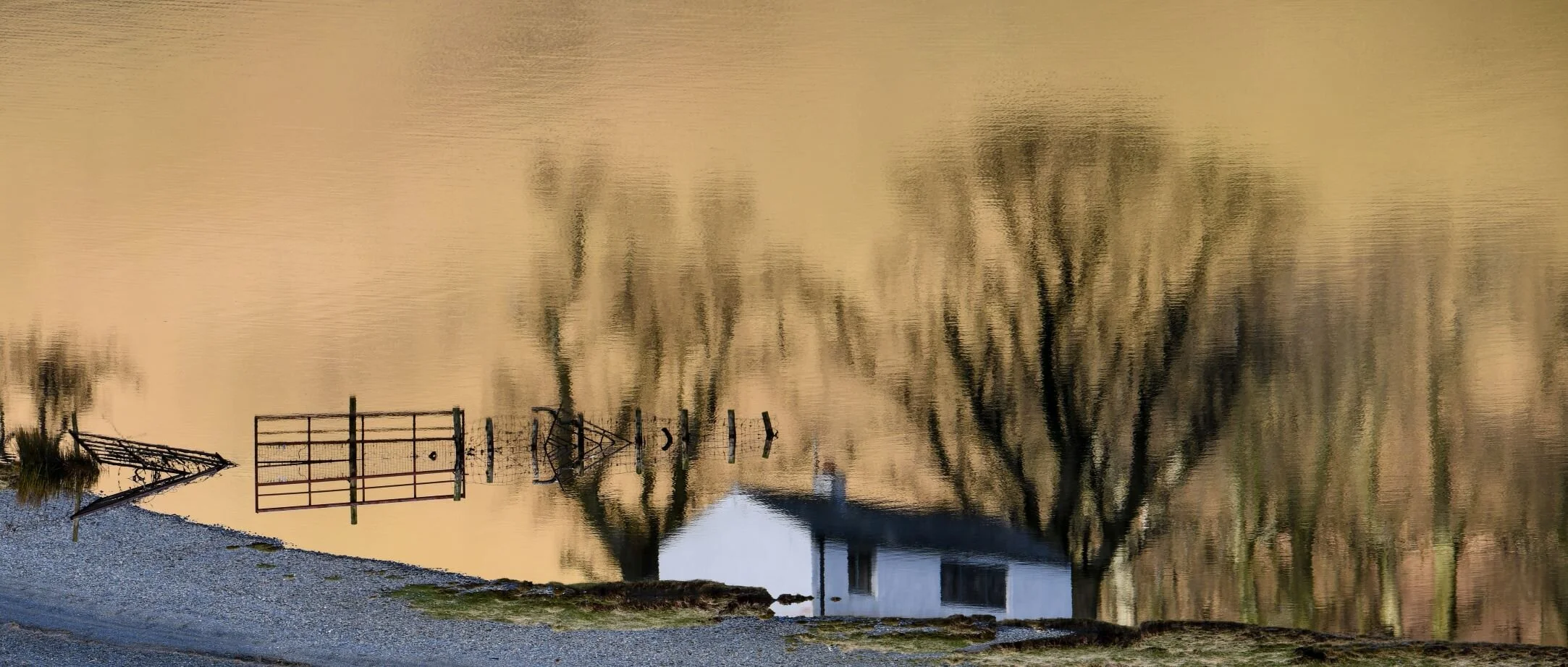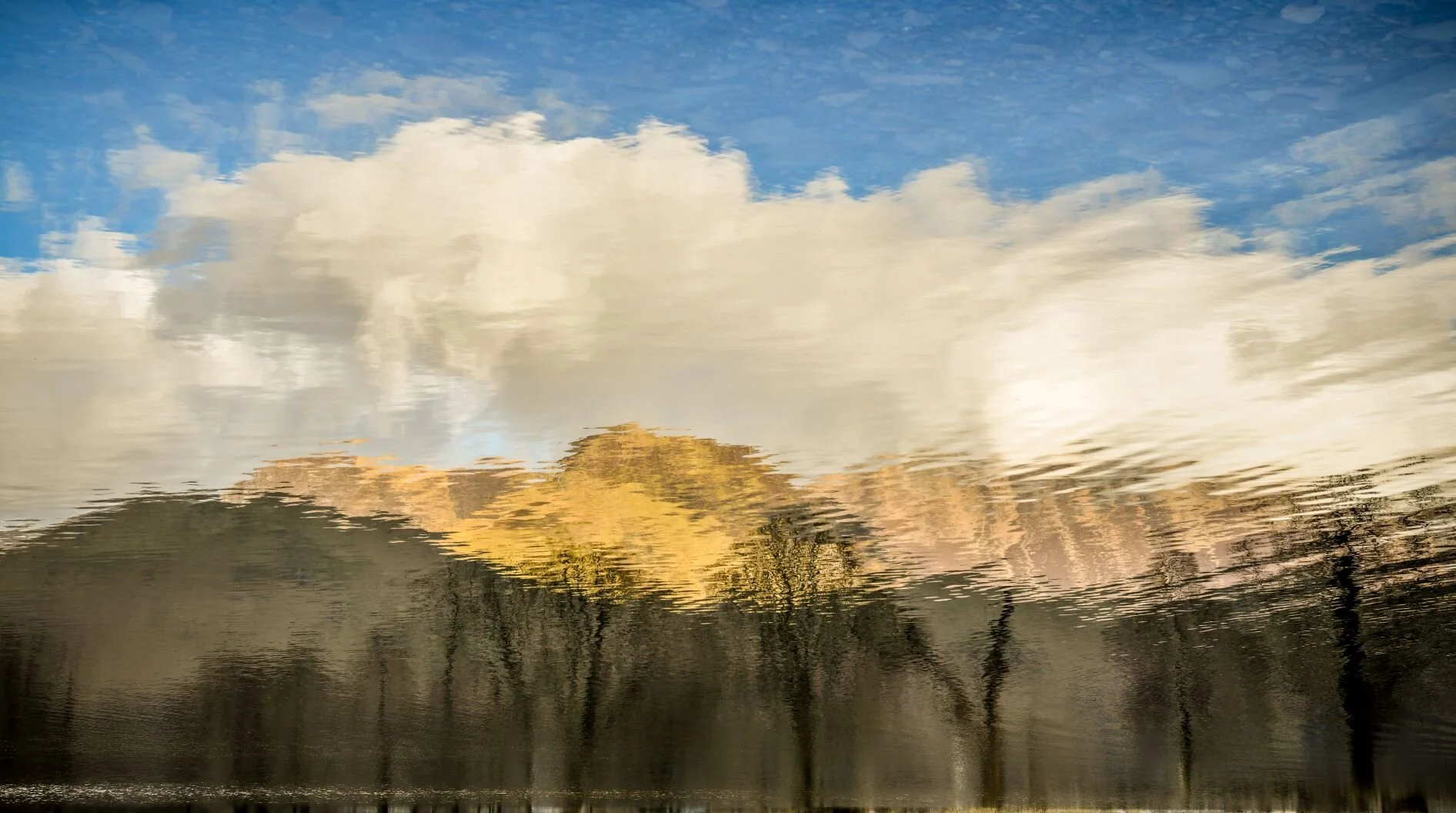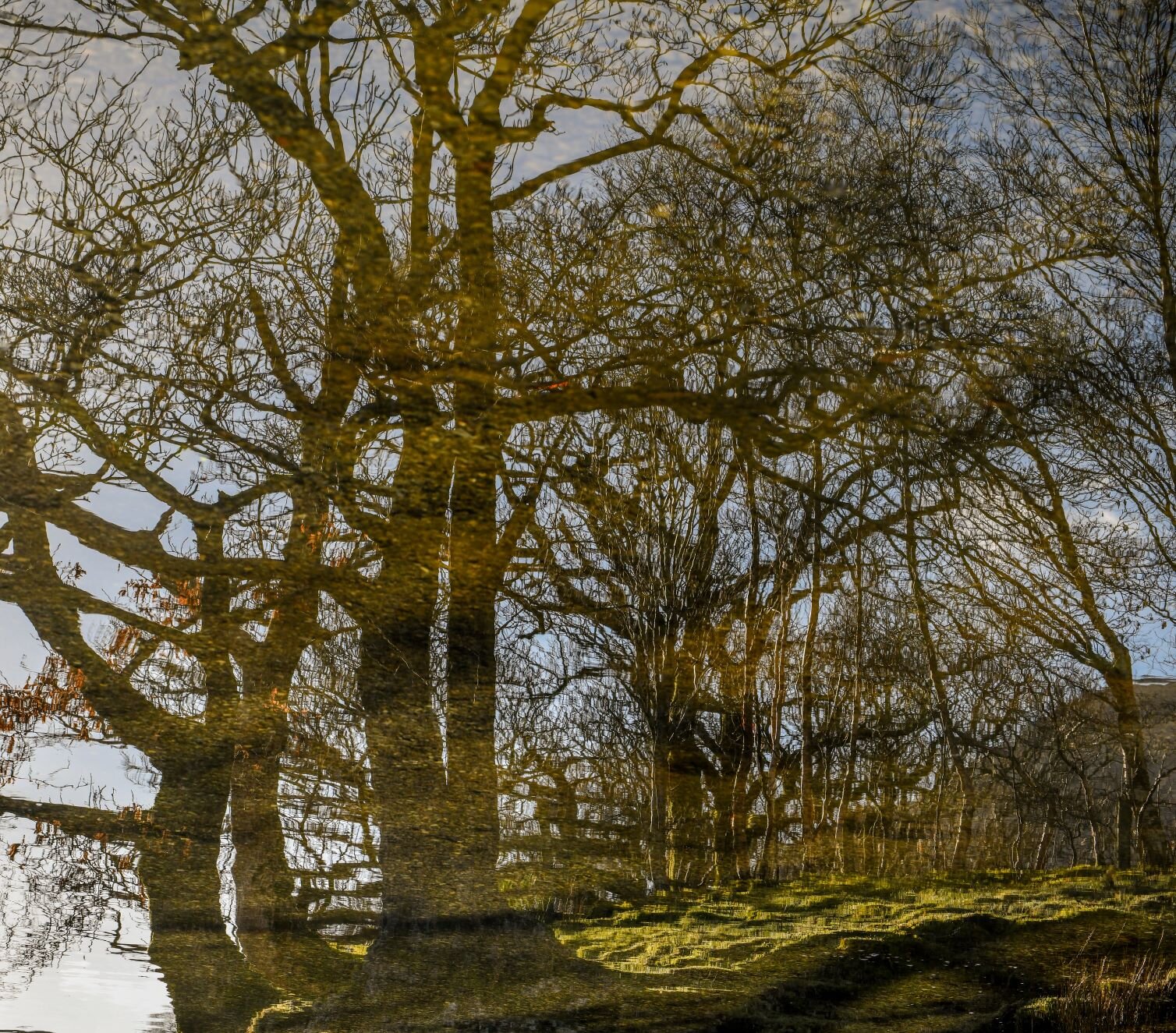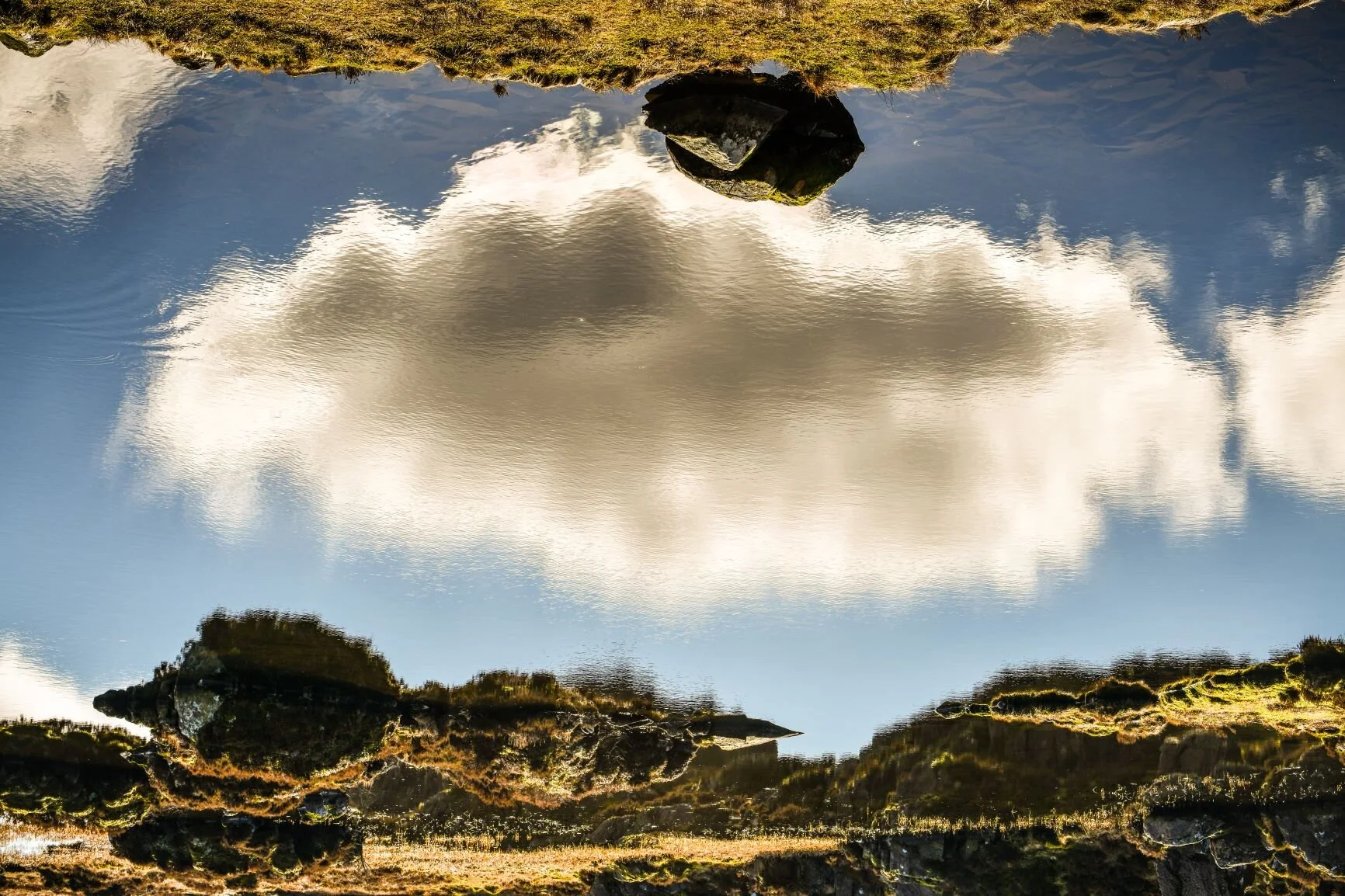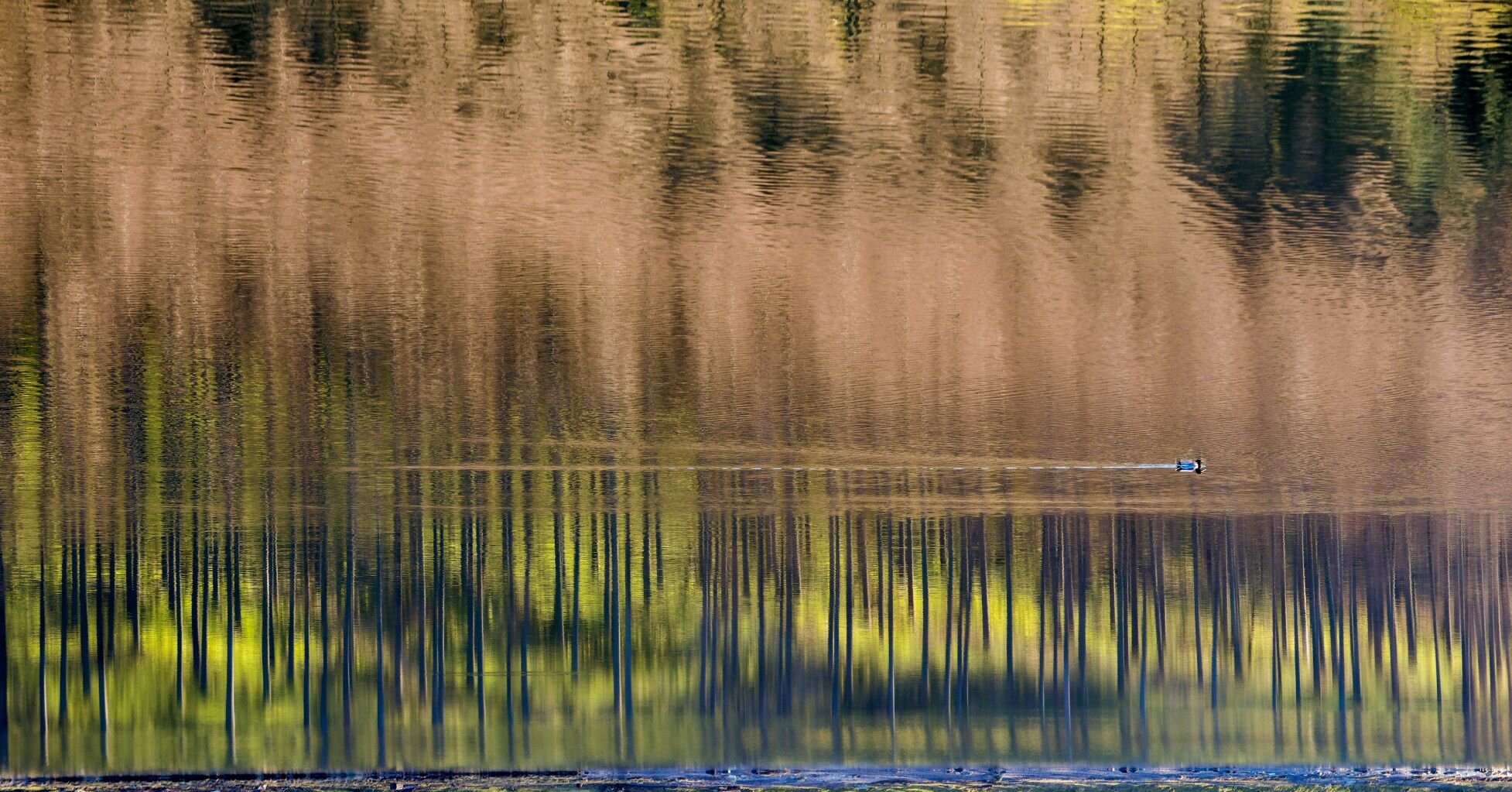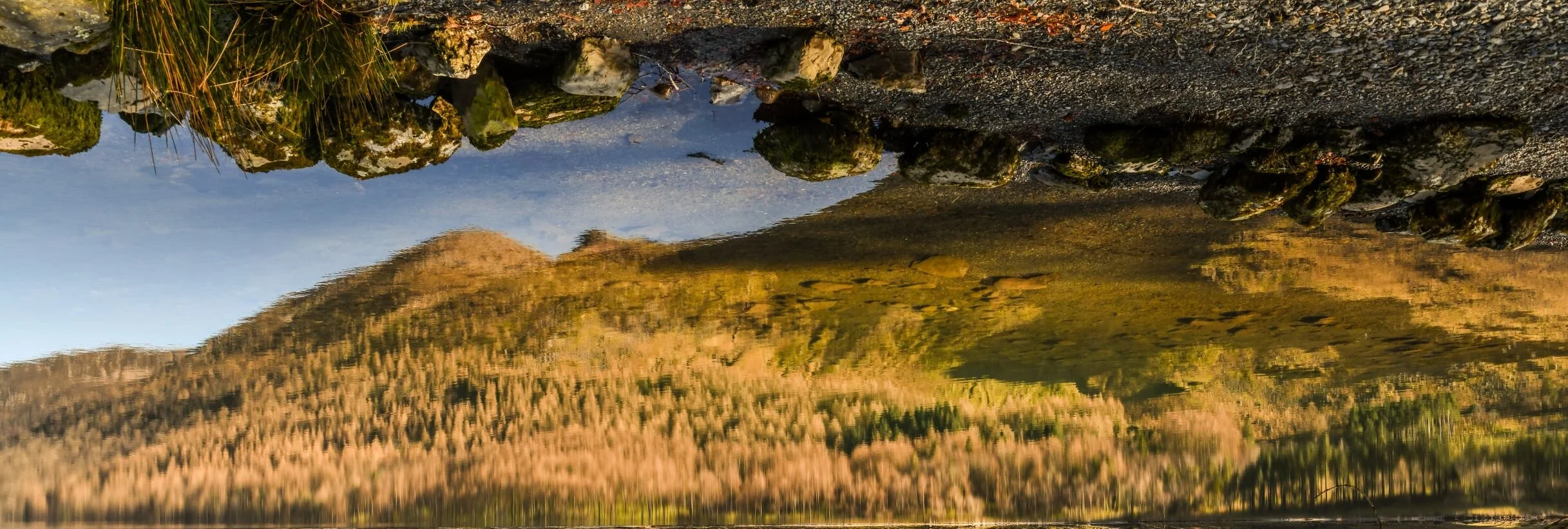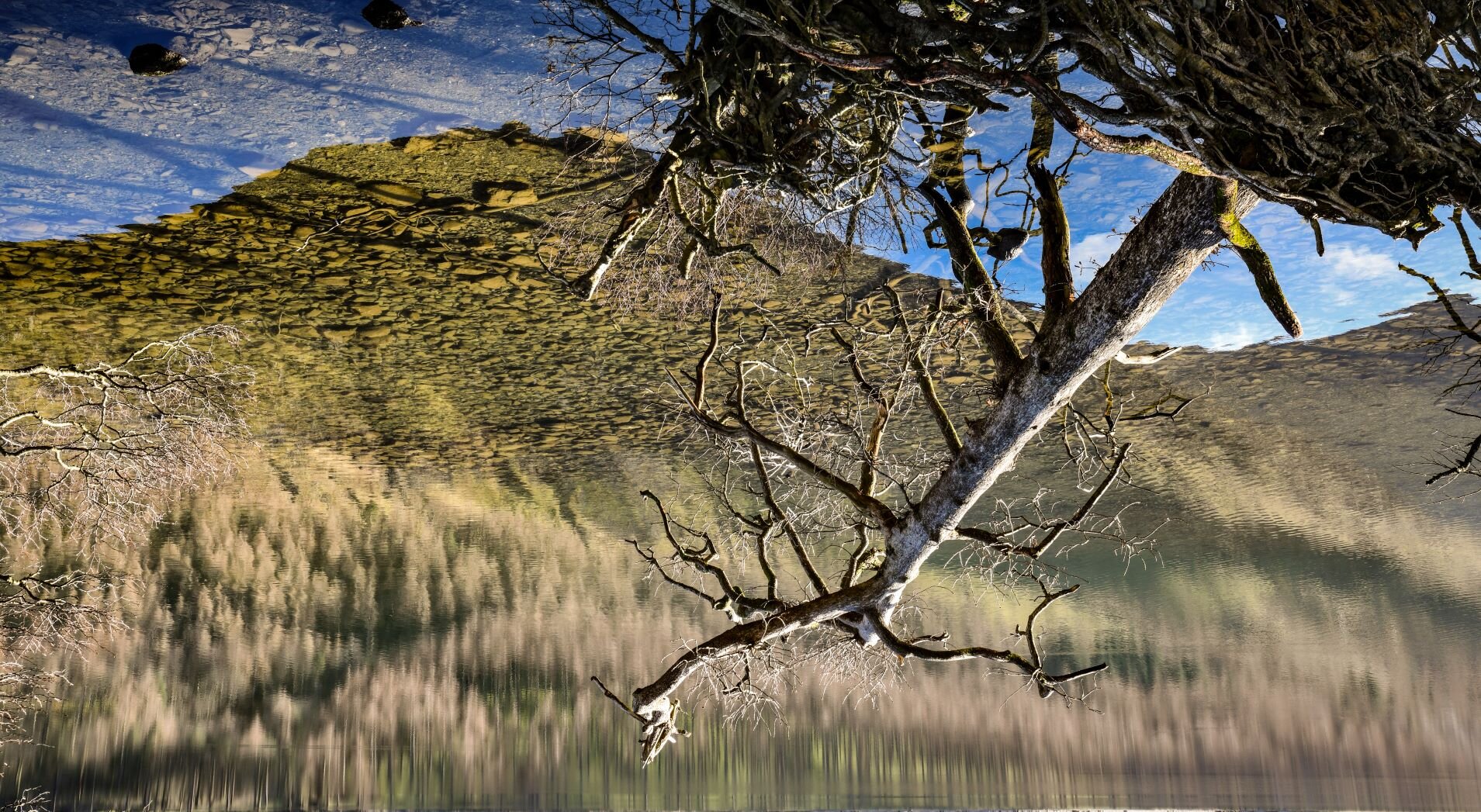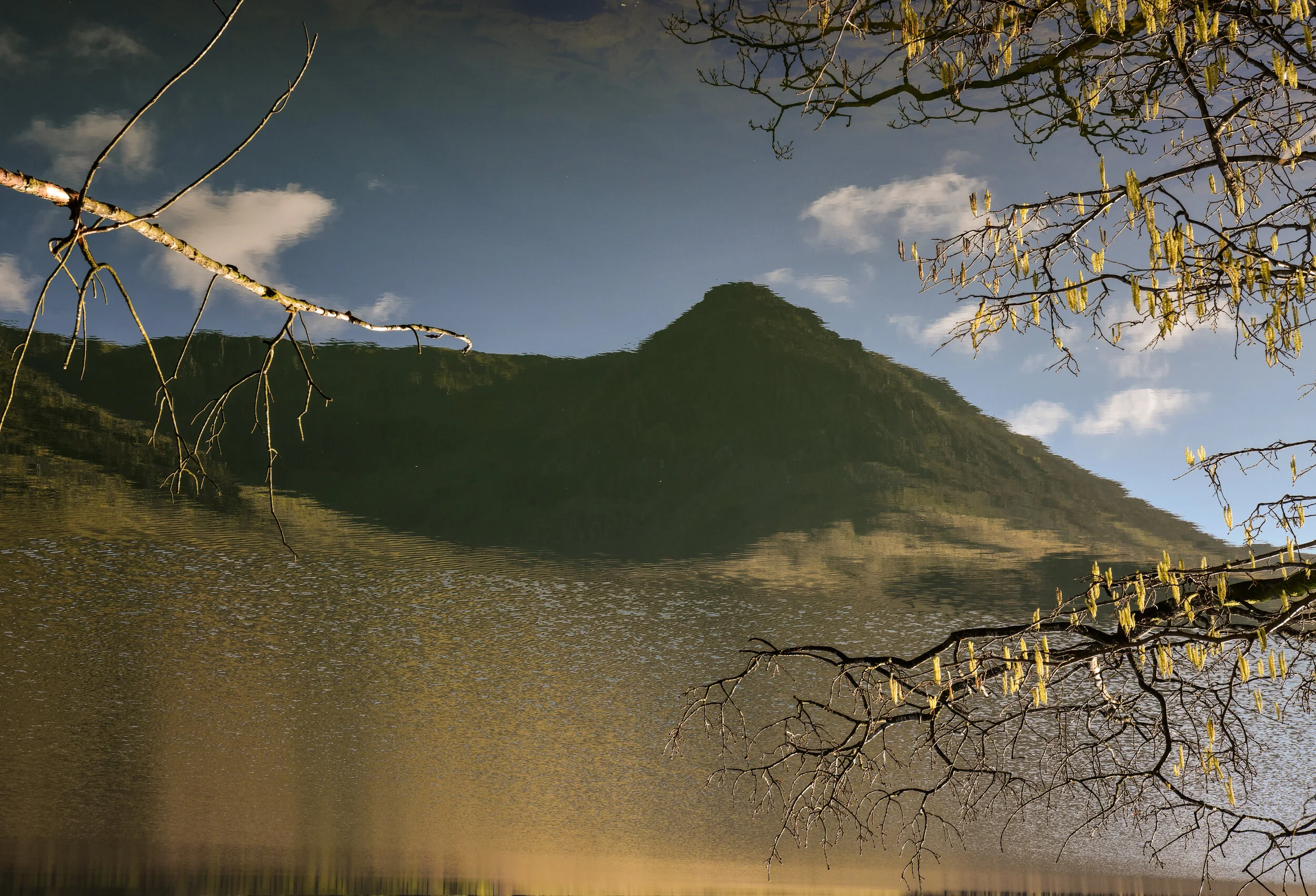Through the lake glass: Buttermere
Aim of the experiment
To explore how the world is filled with the possibility of turning out otherwise, if only (fill in the blank)…
Background
In Lewis Carroll’s Through the Looking Glass, Alice starts out by looking at the mirror, and noticing that everything she sees has been reversed. Yet this isn’t all. When she actually travels through the glass into looking glass world, everything there works backwards as well, and logic makes no sense at all (the faster she runs, the further she gets from where she wants to be)…This experiment brings Lewis Carroll’s playful thought-experiment together with the key ideas behind this project. If the world is in a constant state of recreating itself, then it doesn’t take a huge leap of the imagination to suggest that the fundamental characteristic of this world is the possibility for change. Depending what ‘cuts’ (to use Karen Barad’s term) we make on the world during the process of re-emergence, and what cuts it makes on us, then this raises the possibility that the world could actually turn out very differently to how it is. So what if we travelled through the reflected surface of Buttermere Lake? What might we find? This experiment seeks out reflected images as a means of exploring how the world might emerge if we ‘cut’ it differently, and invites us on a journey of our imaginations from there. What kind of a world might we want to create, how would we participate in it, and how would it differ from the one we know?
Route instructions
Two alternative routes are provided, aimed at different levels of ‘hiker’, both of which start in Buttermere village and walk around the lake, but one takes in a number of peaks, and the other remains lakeside. The other key challenge to this route is finding a sufficiently calm day upon which to do it (3mph winds or less is best).
Route 1: Difficult (10.8 miles & 4,900 feet of ascent)
Can be shortened by descending before Haystacks at Scarth Gap, or before Fleetwith Pike and descending the Warnscale Bottom Valley.
Route 2: Easy / medium (4.75 miles, 465 feet of ascent)
Accessible alternative: the track from Buttermere village down to the NW end of the lake (one of the best places for reflections) isn’t metalled, but is flat and has a fairly good surface for wheelchairs or push buggies. See Route 25 of Miles Without Stiles more details. The lake can also be accessed directly from laybys at the roadside, near the Gatesgarth end.
Route 1
Click on the image to open an interactive version of the map on Viewranger,
or you can download the GPX file of my route here. (© OpenStreetMap contributors)
Route 2
Click on the image to open an interactive version of the map on Viewranger,
or you can download the GPX file of my route here. (© OpenStreetMap contributors)
Route adaptation for walk-from home
The advantage of this experiment is that it can be done at any lake in the Lake District, or any other body of water. Some of my favourite reflected photographs that I’ve taken over the years involve puddles, although you might prefer not to imagine travelling through a murky city centre puddle into the world beyond! This experiment has the disadvantage that you need perfectly still weather conditions - it took me a number of different visits to Buttermere to get the images on this website (on some of the days when the weather forecast said it would be entirely still, the lake had white horses!)
Writing & Art Ideas, & Virtual Alternatives
Writing & Arts Ideas
No matter if you plan to explore this experiment in writing or visually, the first stage is take photographs of reflections (either on a camera, or your phone) en route. The aim here isn’t to compose perfect mirror reflection images, with the boundary across the centre of the picture. Instead, photograph the reflection as the main subject. Back home, do some basic edits, to crop out any elements of non-reflected image, and flip the photo 180 degrees so that the reflection is the right way up (both of these are easily done with any mobile phone gallery editor). This reflected image can stand on its own, as a work of photography. Alternatively, you can use it as the starting point for a piece of writing, or a drawing or painting. Feel free to use your imagination in order to inhabit this world (as Alice did in Looking Glass world), and to embellish the scene, as surreal as this might turn out. It might be an interesting experiment to incorporate the notion of mirroring formally (see my poem below).
Virtual alternative
Use either my cover image above, or any of the images in the gallery below, as the starting point for a piece of writing or new art.
My poetry
Buttery
I shook pebbles from the sky
as if to make a last bastion stand
in defence of freedom.
Who was I kidding?
They’d already fenced-in the clouds
and the trees had long since resorted
to a lateral kind of growing.
When I was offered the chance
to touch my imagination – it was glassy smooth.
(Washed-up matter, detritus, purposeless grass).
I didn’t trust any of it for water.
-
I didn’t trust anything for water.
Purposeless grass, detritus.
Washed-up matter touched my imagination
until it was glassy smooth. The chance
offering of a lateral kind of growing?
But the trees had long since resorted
to fencing in the clouds.
Who was I kidding
in defence of freedom?
As if to make a last bastion stand,
the sky shook pebbles from me.
